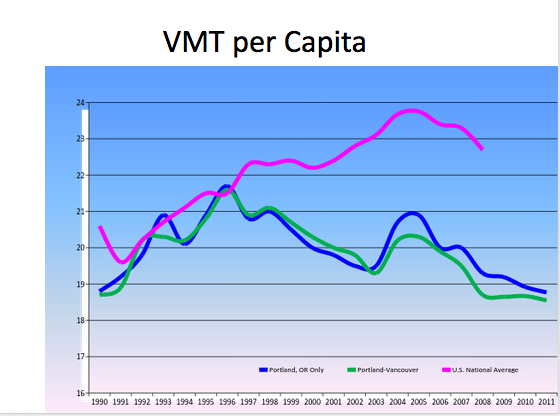Three metro planning leaders help make T4America’s MPO guidebook launch successful
Transportation planning is hot, hot, hot! Or so it would seem, after more than 700 people registered for last week’s online seminar to launch The Innovative MPO, a guidebook for metropolitan transportation planning.
The book draws on the work of metropolitan planning organizations (MPOs) of all sizes across the country, offering a range of new ideas in planning, programming, technical analysis and community partnerships for almost any MPO. The seminar offered a small sample of those offerings. (You can see a tweet-by-tweet recap on this Storify page.)
Speakers included Andy Cotugno, Senior Policy Advisor from Portland Metro; Tim Brennan, Executive Director of Pioneer Valley Planning Commission (PVPC), and Steve Devencenzi, Planning Director from San Luis Obispo Council of Governments (SLOCOG). Health, equity, safety, climate mitigation, and performance measures were all major themes that MPOs are currently facing and trying to solve, and these three are on the forefront of finding solutions.
Cotugno retraced some of the tactics Metro used to make it possible to do more while driving less. “Importantly, the impact of linking land use and transportation is that our vehicle miles traveled per capita, which is one of our key performance key indicators, has been going down for the past 15 years,” said Cotugno. “That’s a result of having a tight urban growth boundary, focusing on transit investments, and aggressively improving transit, and expanding bike and pedestrian; all leading to shorter trips and less vehicles miles traveled. “
The Pioneer Valley Planning Commission is a medium-sized MPO covering the Springfield, MA, area – and it is a leader in incorporating health indicators and outcomes in its transportation planning. Brennan said that work is the outgrowth of a state policy adopted in 2009, known as GreenDOT, that seeks to “reduce greenhouse gas emissions, support smart growth development and promote the healthy options of walking, biking and public transit.”
He noted that Massachusetts also has committed to a “mode shift” goal of tripling transit, walking, bicycling trips through 2030. “The question for us as an MPO is … how do we connect transportation and health” in way a that meets the state goals?
“We are also trying to make smarter investments with the austere budgets we have for transportation.”
PVPC began to develop a method for screening and scoring projects to meet goals of reducing congestion and improving mobility while promoting active transportation and reducing health impacts. The first major opportunity to “make the connections real” was the proposed construction of an $800 million casino development by MGM, a project with major implications for Springfield. Among the key criteria was a health impact assessment that now has become integral to the project scorecard.
SLOCOG covers nearly 2.2 million acres in the San Luis Obispo, CA, area, encompasses seven cities, and was featured for innovations in scenario planning. The rate of growth within San Luis Obispo County has dropped off dramatically, Devencenzi said, leaving a much different tax base than was there just 20 years ago, with a current population of 275,000, expected to grow by 40,000 or so in the next 20 years.
However, the region is surrounded by huge populations that severely impact the area. Bordered by the Bay Area, Los Angeles County, San Joaquin Valley, San Diego, and the Sacramento area leaves the San Luis Obispo County trying to predict traffic patterns and congestion for a total population of 35.5 million people.
“There are about 30 million people that are within two hours of us, and they travel through and to our county. So we have a lot of issues in transportation that aren’t self-generated,” Devencenzi. The MPO used a state grant and contributions from member jurisdictions to meet requirements from a state law requiring coordination of land use and transportation (SB 375).
A big first step was to translate the disparate terms for zoning categories in the seven jurisdictions to a “common language”, creating a regional land use map that could then be used to determine where future growth could and should go.
“We allocated growth just within existing communities and demonstrated we can meet the future demand without having to sprawl across the countryside,” Devencenzi said. “We created target development areas around commercial districts,” and with massive public input, created a Regional Transportation Plan, out just this month.
These were only three of the more than 50 MPOs featured in the guidebook, organizations that are pushing the envelope to stretch public resources, achieve multiple benefits with a transportation dollar or simultaneously advance regional and economic development priorities.
The conversation over The Innovative MPO continues online and on Twitter. To join the conversation, follow the featured MPOs on Twitter, and use the #TheInnovativeMPO to stay updated with current practices MPOs are using to change their regions for the better.




















